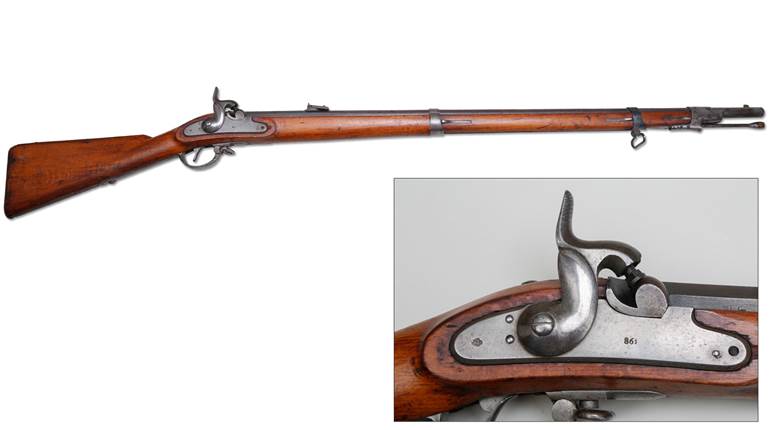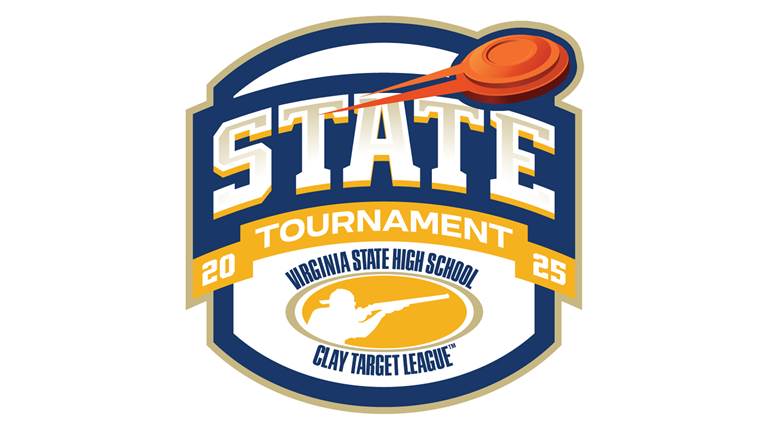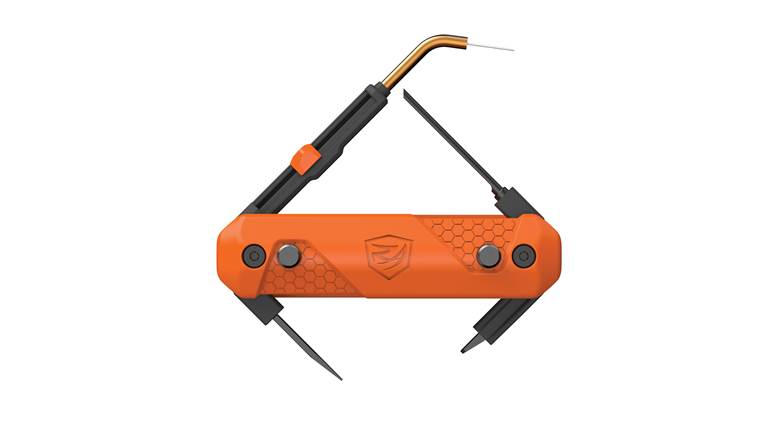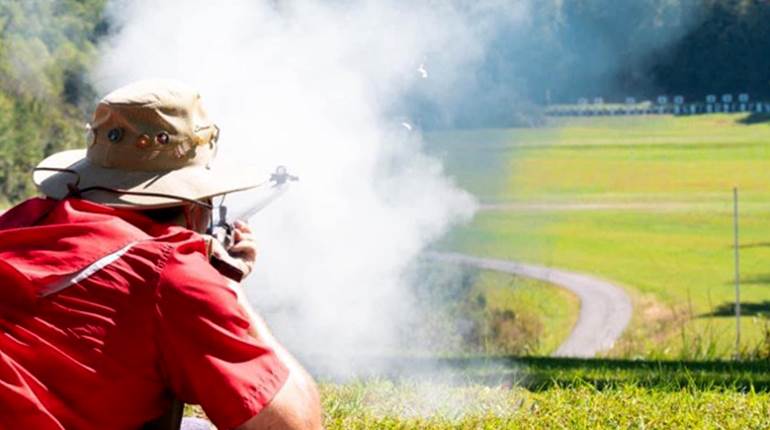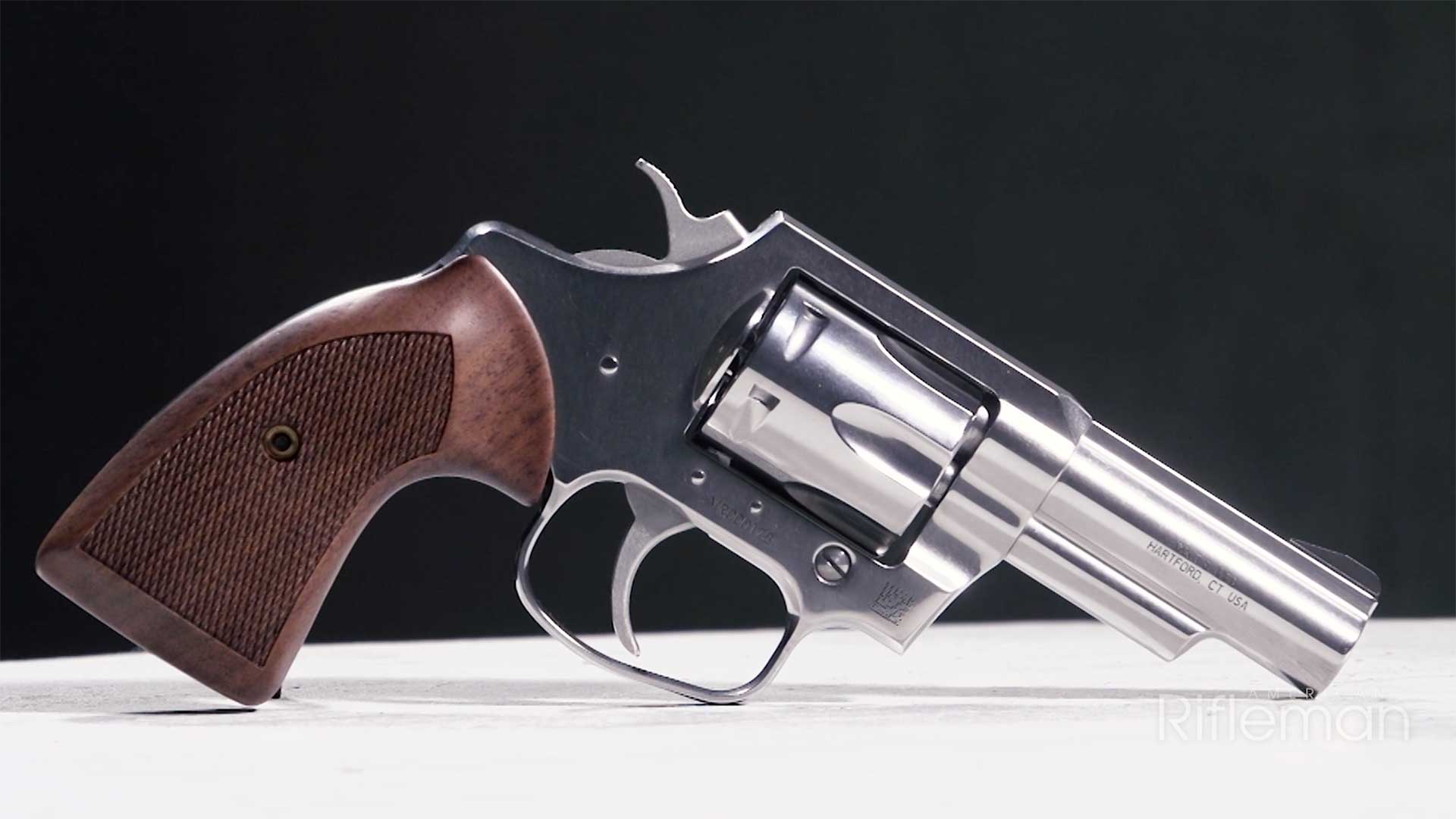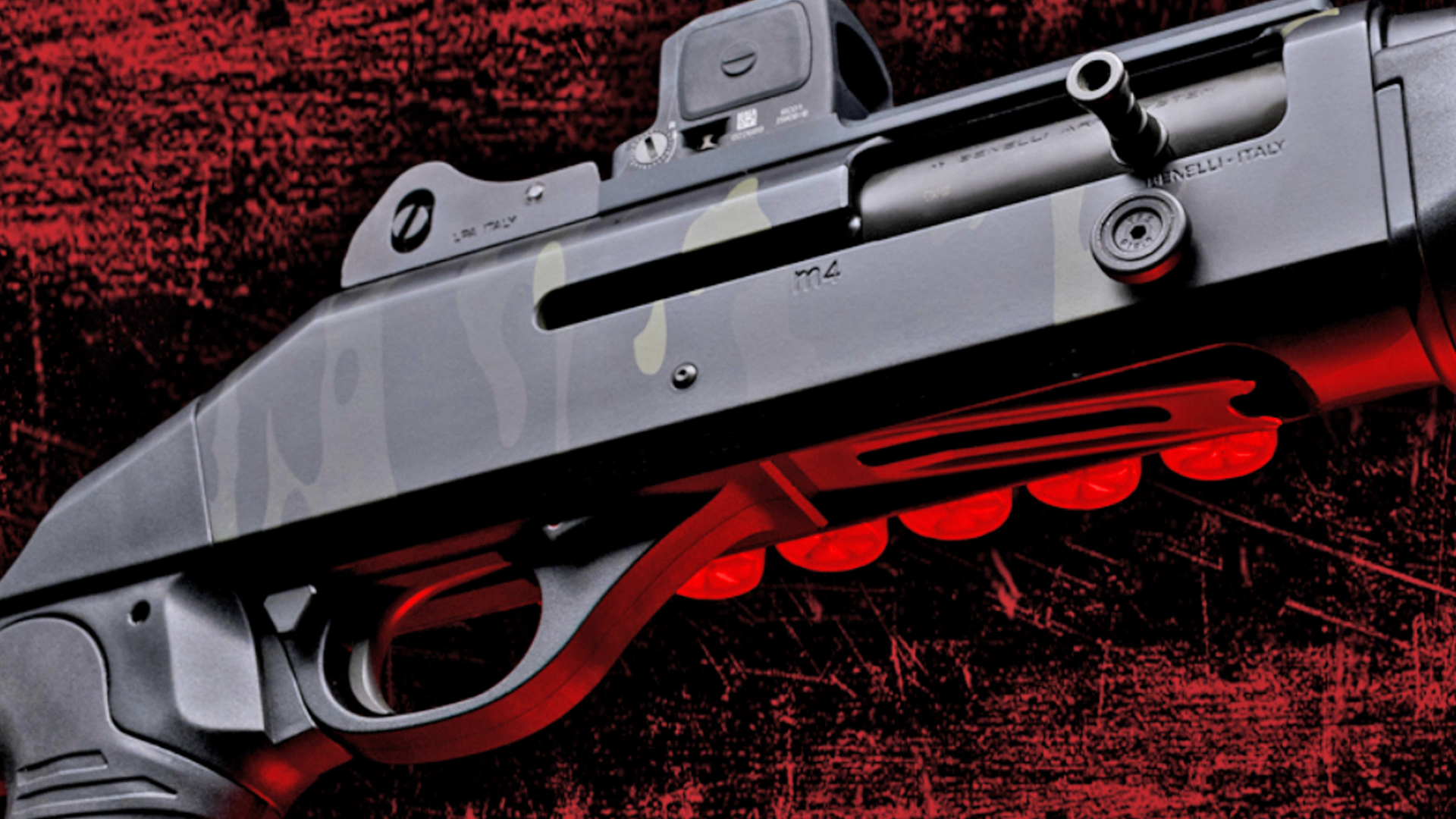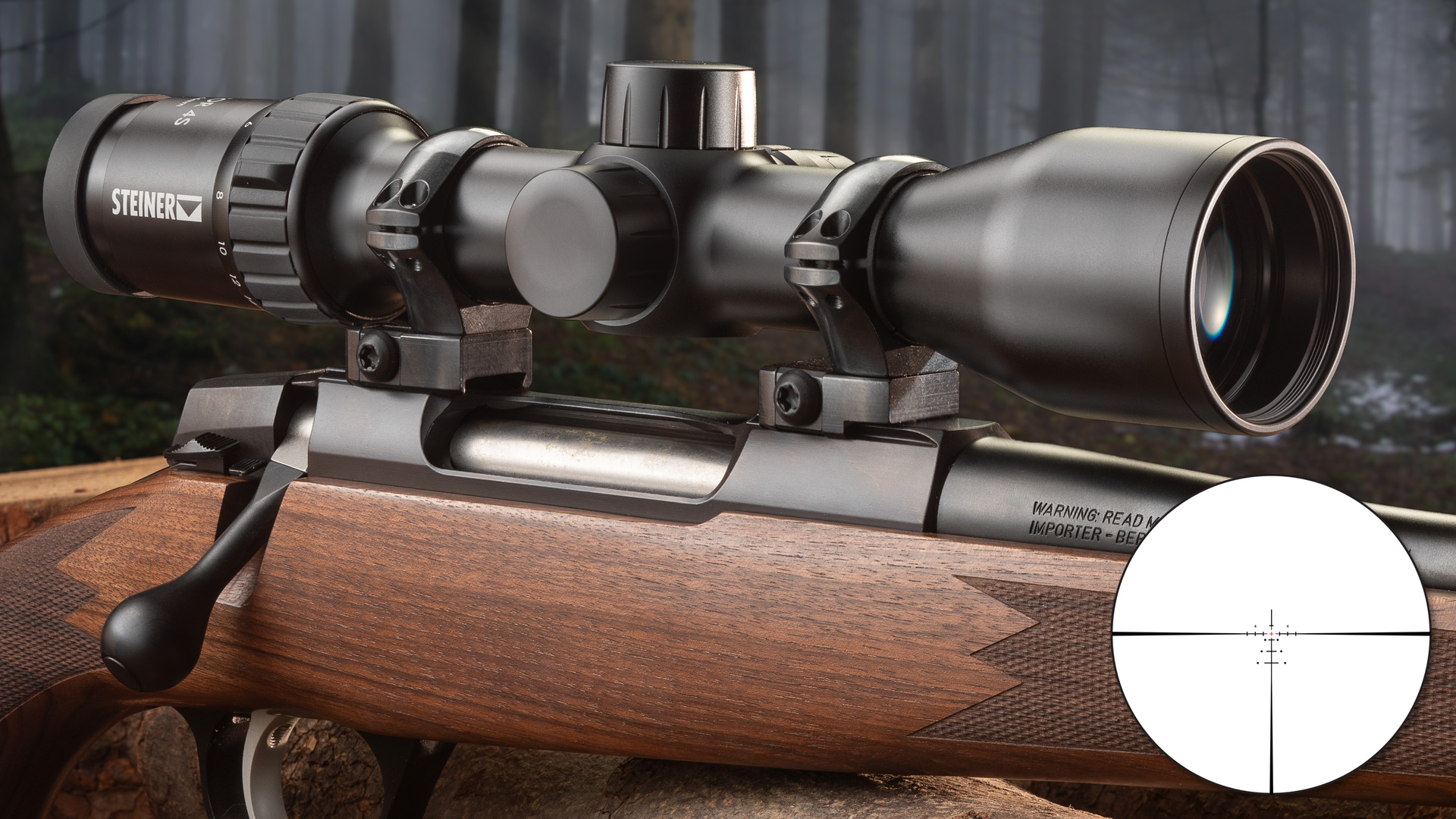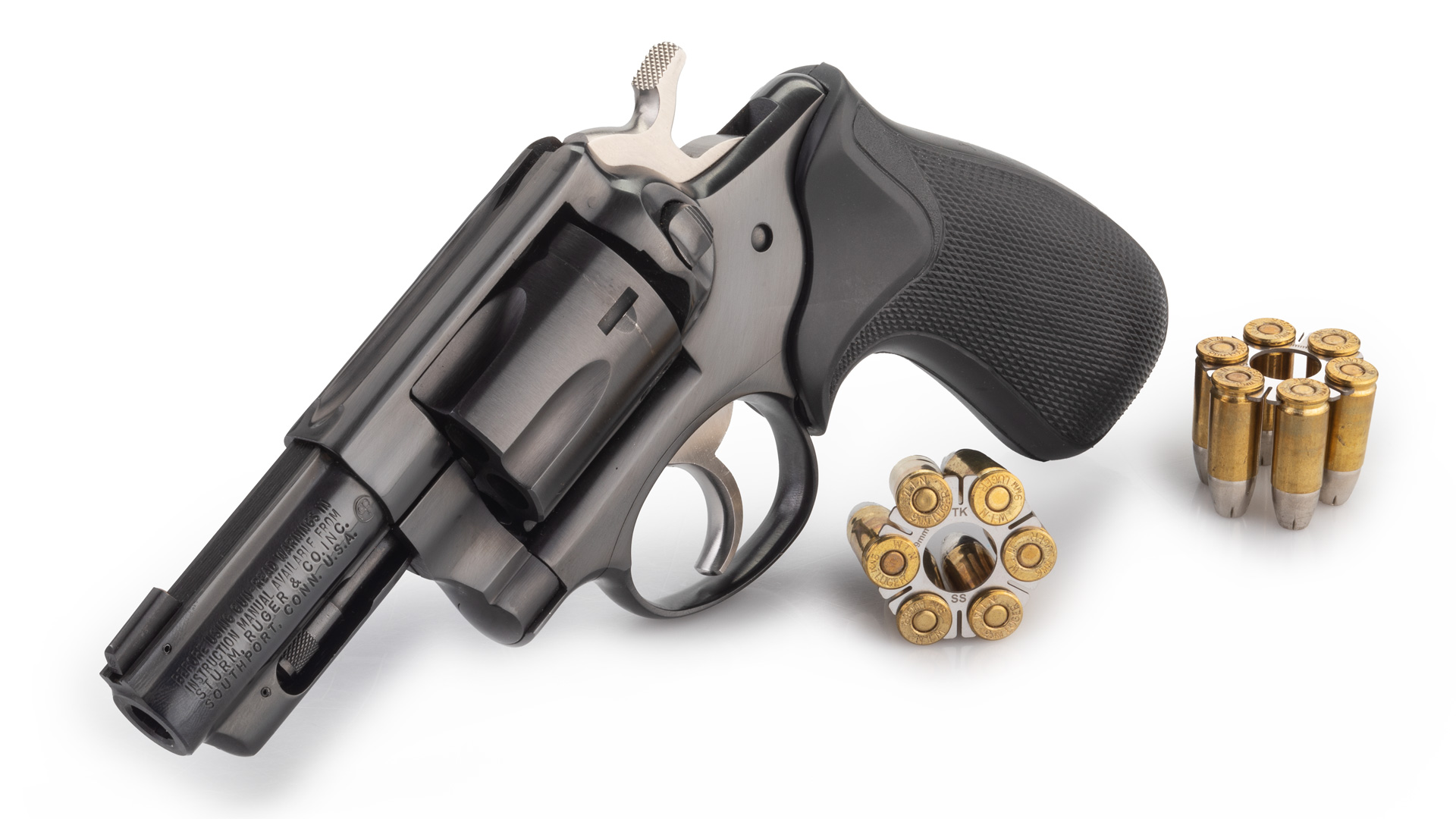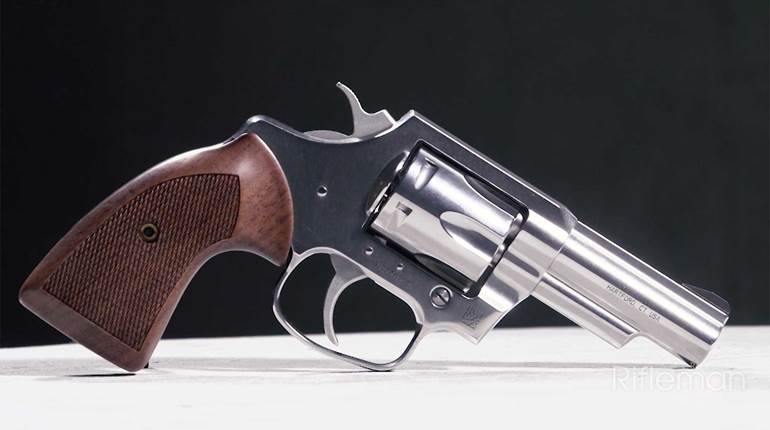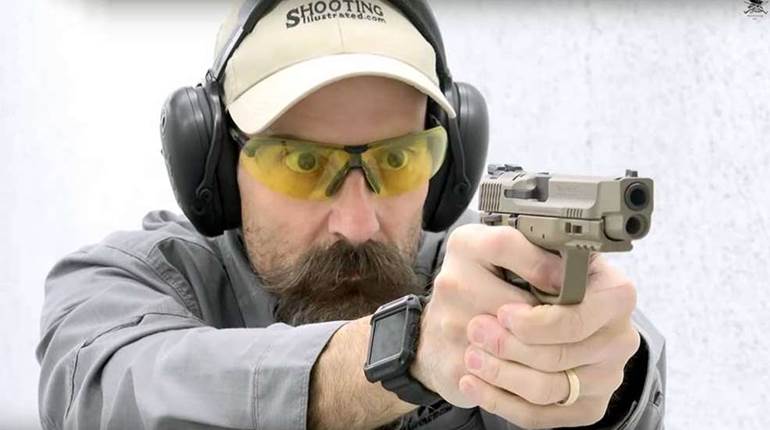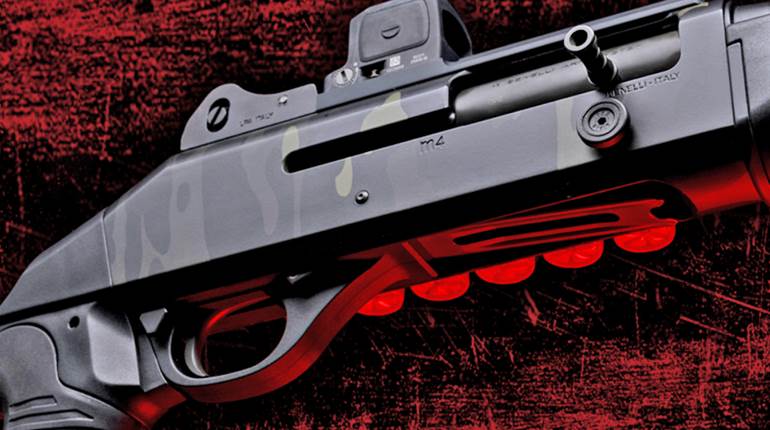
This article appeared originally as "State of the Art: The U.S. Model 1855 Springfield Rifle-Musket" in the August 2003 issue of American Rifleman. To subscribe to the magazine, visit the NRA membership page here and select American Rifleman as your member magazine.
With its Maynard tape priming system, the U.S. Model 1855 percussion rifle-musket was state-of-the-art when adopted by the U.S. Army. It was the standard longarm of regular Army forces at the start of the Civil War and was used by both sides throughout the conflict.
Secessionist forces fired on Fort Sumter, and the fort’s subsequent surrender caused President Abraham Lincoln to call for 75,000 volunteers on April 15, 1861, to put down the rebellion. The 1st Michigan Infantry regiment left its state on May 13 for Washington and arrived three days later, with 798 officers and men in 10 companies.
As the regiment marched through the streets of Washington, Lincoln was heard saying, “Thank God for Michigan.” It was the first western regiment to reach the nation’s capital. When the men of 1st Michigan arrived, they were armed with .58-cal. U.S. Model 1855 percussion rifle-muskets.

The Model 1855 rifle-musket was the first U.S. regulation arm to use the .58-cal. hollow-base Minié bullet. Then-Secretary of War Jefferson Davis authorized the adoption of the Model 1855 as the U.S. Army’s standard arm on July 5, 1855, replacing the .69-cal. Model 1842 percussion smoothbore musket.
One of the rifle-musket’s new features was the Maynard tape primer system, which was patented on Sept. 22, 1845, by Baltimore dentist Dr. Edward Maynard. Its purpose was to eliminate the need to manually place a percussion cap on the nipple each time the gun was fired.
A paper roll carrying the priming compound was advanced over the nipple each time the hammer was cocked. When the trigger was pulled, the hammer struck the primer, which was a fulminate section incorporated into a strip of paper. The fulminate would detonate, driving a jet of flame through the nipple to ignite the main powder charge, firing the rifle-musket. The system was similar to that of a toy cap gun. The rifle-musket could still be fired with the conventional percussion cap.
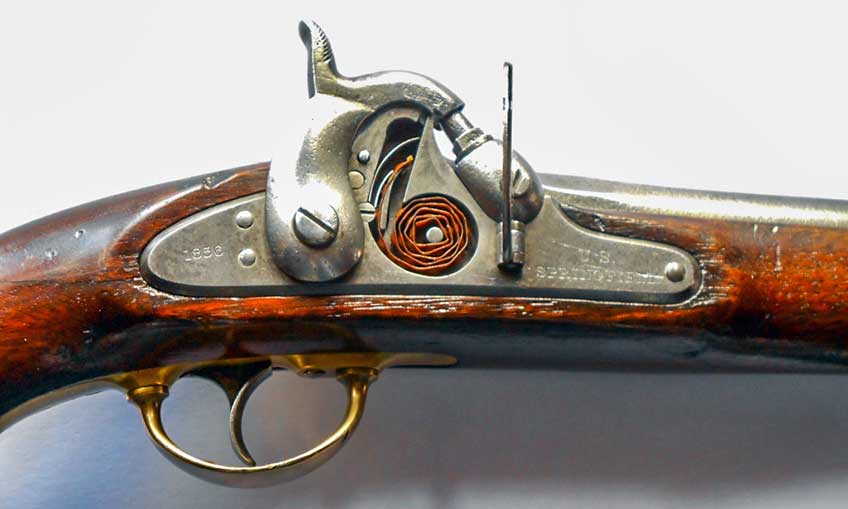
The 9-pound, 3-ounce U.S. M1855 rifle-musket had an overall length of 56 inches. The 40-inch-long barrel, finished in the bright, was equipped to accept a socket bayonet. It had an iron-blade front sight and a long-range rear sight graduated to 800 yards. The upper left barrel flat was stamped with the proofmarks “V/P” and an eagle head, and the date was marked on the top barrel flat near the breech.
The nipple bolster was equipped with a clean-out screw, and the three flat barrel bands were retained by conventional band springs. The sling swivels were on the middle barrel band and trigger guard. While the fore-tip was of brass, all the remaining furniture was steel in the bright, including the buttplate, which was stamped with a “US.” The M1855s used a swelled-shaft, tulip-head steel ramrod.
The Maynard tape primer door was fitted to the lockplate forward of the C-shaped hammer. Within the compartment, a roll of 50 Maynard tape primers was held. The lockplate was stamped either “U.S./SPRINGFIELD” or “U.S./HARPERS FERRY” forward of the primer door in two lines, depending on which of the government facilities manufactured the rifle-musket. The date was stamped to the rear of the hammer on the lockplate’s rear. The Maynard tape primer door was stamped with a large spread eagle.

Three sample M1855s were made in 1856 at Springfield, and full production was under way that summer, but Harpers Ferry didn’t start manufacturing the new rifle-muskets until late 1857. In 1858, it was decided to substitute a two-leaf rear sight for the long-range rear sight.
A year later, an iron patchbox was added, plus the brass fore-tip was changed to iron and secured by a screw instead of a rivet, but it was late 1859 before the changes were all made. That year, Harpers Ferry reported 6,489 rifle-muskets manufactured; however, 2,089 were without rear sights due to the delay in final approval for the change over to the new two-leaf rear sights.
The secretary of war’s annual reports from 1857 through the middle of 1860 reflected that the two armories together had made nearly 54,200 M1855 rifle-muskets: By 1861 Springfield Armory had made 47,115; Harpers Ferry had produced 12,158.

The regulars started to receive the new rifle-muskets in 1858, and during the next two years they received 6,800. Troops found several problems with the gun, but the most serious complaint had to do with poor results experienced with the Maynard tape primers. The soldiers at Los Lunas, N.M., found that half of the tape primers misfired. The results were even worse at Fort Stockton, Texas, with only seven tape primers firing out of 144.
Unsurprisingly, it was dropped from the M1861 rifle-musket. There were a number of additional complaints: the sights were too coarse; the barrel should not have been in the bright, as some soldiers felt that the sunlight glare on the bright barrel made it more difficult for accurate aiming; some percussion caps failed to fire; and accuracy was mediocre.
Company H, 1st U.S. Infantry was assigned to Fort Stockton in the Department of Texas in the late 1850s. Forty-eight men fired one round each at a target 72 inches by 22 inches at distances of 100, 200 and 300 yards. The results were: 30 hits out of 48 at 100 yards; 30 hits out of 48 at 200 yards; and seven hits at 300 yards. At Fort Duncan, the 1st U.S. Artillery’s results were worse—only 17 rounds out of 39 struck the target at 100 yards. The results at farther distances were even more abysmal.

The Model 1855 Springfield in Confederate Service
Southern states obtained a quantity of Model 1855 rifle-muskets on their state militia allotments before the war. Florida drew 100 on its 1860 allotment, and a Georgia adjutant general report dated Feb. 26, 1861, indicated the state had received 1,225 M1855s.
Tennessee’s 1860 allotment called for 701 Model 1855 rifle-muskets and 381 Model 1855 cadet rifle-muskets. Alabama also received 150 of the shorter Model 1855 cadet rifle-muskets. The major difference between the two rifle-muskets was the length of the barrel. The cadet barrel was 38-inches long, giving it a slightly shorter overall length than the standard rifle-musket.
When Louisiana state troops seized the Baton Rouge Arsenal on Jan. 10, 1861, the state obtained an additional 1,099 Model 1855 rifle-muskets. Two of the state’s infantry units partially armed with the 1855 Springfield rifle-muskets were the 13th Louisiana Infantry Battalion (Orleans Guards), which fought at Shiloh, and the 1st Regular Louisiana Infantry.

The Model 1855 Springfield in the Civil War
Northern states also received Model 1855 rifle-muskets on their yearly militia allotments in the late 1850s. Connecticut received 1,020 M1855s by January 1861, Kansas 600, Maine 580, Maryland 400, Wisconsin 302 and Iowa 100. Vermont received 300 after the start of the war in 1861.
The states of Michigan, Delaware, Massachusetts and Pennsylvania also received Model 1855 rifle-muskets as part of their allotments. In 1858, New York sent a politically connected delegation to Washington to obtain 1,000 of the new Model 1855 Springfield rifle-muskets for issue to the 7th New York State Militia, and they were issued to the state in November. In 1861, New York received an additional 2,951 Model 1855s to help arm the state’s volunteer infantry regiments being mustered into federal service.
Prior to the war, many Model 1855s were sent to California for issue to the regulars and the state militia units. The 350 rifle-muskets delivered to the state in 1860-1861 were issued to the state militia.

In early 1860, Benicia Arsenal reported 7,252 M1855s on hand, and the arsenal supplied the state volunteer infantry regiments formed during the war with M1855s. As late as 1865, the Department of the Pacific listed M1855 rifle-muskets with the 2nd, 4th, 6th, 7th and 8th California Infantries, plus the 1st Nevada Infantry.
In February 1862, Southern forces entered and captured Tucson, Ariz. The California Column—consisting of cavalry, artillery and infantry—was sent to recapture the lost territory. Armed with Model 1855 rifle-muskets, the 1st and 5th California Infantry took part in the advance into Arizona and beyond. Union troops entered Tucson on May 20, two weeks after the Confederates had evacuated the town.
When the column left Tucson in July for the Rio Grande, the Union infantrymen were issued 85,000 rounds of rifle-musket ammunition, and an additional 40,000 rounds were placed in the wagon trains. But Native Americans, not Confederates, gave the California Column the most difficulty. At the water springs in Apache Pass, Ariz., the infantrymen had several skirmishes with the Apaches. In one attack, two soldiers were killed.

Back East, early on the morning of July 21, 1861, the Union army left its campsites near Centreville, Va., to engage the Confederates nearby at Manassas. Into the late afternoon, Union forces appeared to be on the verge of a great victory. Southern reinforcements arriving on the battlefield launched a major counterattack, which led to a Union retreat that turned into a panic. As the regiments broke for the rear, many soldiers turned and fired their muskets into the air, fortunately missing the men in the front lines.
One of the Union infantry regiments in the battle in the afternoon was the 38th New York Infantry, armed with Model 1855 rifle-muskets. In the afternoon’s fighting, the regiment suffered 15 killed, 55 wounded and 58 captured. The New Yorkers recaptured three of Rickett’s artillery battery from the Confederates and dragged them to the rear, but the 38th was forced to leave them in the road.
The last of the Union regiments to leave the field of battle was the 3rd U.S. Infantry, which provided a rear guard for the retreating Union Army using its Model 1855 Springfields. Additional Union infantry regiments engaged in the battle armed with the Model 1855s were the 1st Michigan, the 1st and 2nd Connecticut, and the 2nd Vermont.

The 42nd New York Infantry was one of several regiments that took part in the debacle at Ball’s Bluff, Va., on Oct. 21, 1861. A reconnaissance in force was ordered to determine the activity of Confederate forces in the area.
Having insufficient boats to transport all the troops over to the southern side of the Potomac River, many of the Union solders never reached the battlefield. Better-led Southern forces routed the attackers. In their retreat, the Union infantrymen threw their muskets into the river and attempted to swim to safety, and many of the 42nd’s Model 1855 rifle-muskets were lost in this manner.
A year later, in the fall of 1862, Gen. Robert E. Lee made his first invasion of the North. On Sept. 17, 1862, at the Battle of Antietam, the bloodiest day of the war occurred with more than 22,000 casualties reported.

In the battle, the 11th Connecticut, armed with both Sharps rifles and Model 1855s rifle-muskets, was attached to IX Corps led by Gen. Ambrose Burnside (later the National Rifle Association's first president in 1871). Burnside’s objective was to cross over a stone bridge—that now bears his name—and attack the Confederates.
The plan called for the 11th to go forward as skirmishers and drive the Confederates from the bridge. The remaining troops would then charge across the bridge.
It was a hard fight, and it took several hours before the Union forces captured the bridge. The infantry then proceeded across, and was on the outskirts of Sharpsburg when Gen. A.P. Hill’s Confederate infantry arrived from Harpers Ferry.
Hill’s troops counterattacked and drove the Union forces back. In the day’s action, the 11th suffered 37 killed and 102 wounded. The battle ended in a draw, but Lee’s army retreated back into Virginia.

The Model 1855 rifle-musket remained in service throughout the war on both sides and represents the last developmental stage in the evolution of U.S. Military muzzleloaders. The Model 1855 story, however, did not end with the last guns produced at U.S. Military arsenals.
Although parts and tooling for the Model 1855 Springfield were moved from Harpers Ferry to Richmond in April 1861 to make the C.S. Richmond guns, the distinctive humpback lockplate remained, but without provision for the Maynard tape primers.












